Grow more fruit in less space
Finding innovative ways to grow fruit in limited space is nothing new in the art of gardening and with today’s exciting choice of fruiting plant varieties, creating a backyard food forest has never been so much fun. This article is proudly brought to you by Waimea Nurseries.
1. Planting in pots
Almost any fruit can be grown in a pot or tub if it is given the right feeding and watering - apples, pears, citrus trees, figs, feijoas, berries and even grapes. Generally smaller trees are more successful in containers than larger ones, but restricted roots can actually stimulate fruiting. Sometimes a container allows better soil conditions than your garden soil can provide. A container also allows fruit trees to be shifted about the garden or from house to house. It is well worth investing in top quality planting mix and repotting every few years. When choosing a container, consider size, strength, and its ability to hold water and nutrients. Drainage holes are critical, but overly porous containers dry out quickly in hot or windy conditions. If the container is too small, it becomes difficult to keep up with watering and feeding.
Berries in a barrel
Blueberries are very attractive flowering shrubs, worth growing for looks alone. Depending on where you live, planting blueberries in a container with the right kind of potting mix, watering and feeding can give better results than your garden soil. This is because blueberries are fussy about soil pH. Unlike most plants, they need an acidic soil of pH 4.5-5.5. They’ll thrive in a peat based medium soil that’s well drained with good water holding capacity. Blueberries have compact root systems and while some varieties grow quite tall, others remain as small compact shrubs. In a large barrel, planting two or three carefully selected varieties will ensure successful pollination and give you berries for picking over many weeks.
Rainwater is best for blueberries. Be aware of the effect on pH when using bore water, which is often higher in salts. It may need correcting with a soil acidifier such as Yates Liquid Sulfur. Feed blueberries with fertilisers suitable for acid-loving plants. If your blueberry bush’s leaves turn a reddish yellow colour, especially near the edges, it is probably lacking in magnesium. Yellow leaves with green veins indicate iron deficiency. Your blueberry barrel is a good place to empty the dregs from your coffee plunger.
2. Against the wall
Growing fruit trees flat against a wall (espaliering) is a charming way to grow fruit in a small garden. Espalier trees are grown along wires supported by posts, against a fence or traditionally on a masonry wall. Even commercial orchards are now finding this ‘2D’ method can maximise the amount of sunlight, giving more fruit per hectare. To find out how to train espalier fruit trees in your garden go to www.waimeanurseries.co.nz
3. Step-over apples
The step-over is a form of low, single layer espalier traditionally grown along the border of a vegetable garden or along a pathway. Start with a dwarf apple tree. Install the wire 60cm above the ground with sturdy posts no more than 1.5m apart. The principal is the same as for espaliering, but kept at just one layer of horizontally trained branches.
4. Mini trees
Naturally dwarf fruit trees and those that are grafted onto dwarfing root stocks are ideal for small gardens or in containers. Many different dwarf varieties of apples, pears, peaches, apricots and nectarines are available. They produce a surprising amount of fruit for their size. The slender column shape of the ‘Ballerina’ apple varieties makes them ideal for containers, training against a wall or as an apple archway.
5. Four in one
Double and triple grafted fruit trees extend the harvest time and give us different flavours on a single tree. Another way to achieve a similar effect is to plant a number of different fruit trees in the same hole. ‘The Family Tree’ is a selection of fruit trees planted very closely together, with branches pruned to grow outwards. The trick is to choose just one family of fruit for each tree as they need to have a similar growth habit. You could combine three to five different apple varieties, or make a family tree of peaches and nectarines. To find out how go to www.waimeanurseries.co.nz.
6. Four seasons
Keep harvest time in mind when deciding what to plant. Apples are for autumn as feijoas are for winter but harvest times also vary for each kind of fruit. For example, there are different apple varieties ready for picking every month from February through till June, while planting a range citrus varieties can give you fruit for at least six months of the year, all year round in warm climates. Planting more than one variety of a fruit tree can also make your trees more productive by improving pollination.
7. Multi-purpose
If you need a small evergreen tree for shelter or privacy or to define a boundary, consider a fruiting one. Feijoas are a popular hedge choice because they are evergreen, grow quickly and don’t mind a bit of wind. Seedling grown trees save money when planting a whole row, but a named variety from a reputable nursery will give you more fruit sooner and of better quality. Planting more than one variety will also improve pollination, which means more fruit. It also extends the harvest season, as different varieties ripen at different times. Generally, feijoas grow best in warmer regions, but early ripening varieties like Kaiteri and Kākāriki are suitable for cooler climates, including Otago.
8. Pollination
Many fruit trees need a pollinator so finding room for two different varieties of the same type of fruit (e.g. two plums or two apples) may be necessary. Luckily we also have self-pollinating varieties which are invaluable in a small garden. It is worth remembering however, that even self- pollinating trees may produce more fruit if there is a cross-pollinator nearby. The other benefit of planting more than one variety is a longer fruiting season, where varieties flower at the same time in spring but fruit at different times of the season.
9. Pruning nous
Pruning is not a matter of life and death, especially in a small garden. But pruning in ways that maximise sunlight, encourage fruiting wood over leaf growth and minimise health issues makes a big difference to the quality and quantity of fruit a tree will produce. Invest in a little research and some trial and error to maximise your yield. Winter is the main time to prune deciduous fruit trees. Most evergreen trees are pruned after harvest to give time for next year’s crop to develop. Watch Waimea’s pruning videos on www.waimeanurseries.co.nz
10. Feed them well
Feeding is paramount for all fruiting plants, especially if you are growing them in containers. Feed little and often to keep up with demand without burning the roots. Slow release fertiliser is ideal. Supplement this with liquid feeding over the growing season.
TIP: To encourage more flower production on deciduous fruit trees apply Sulphate of Potash in autumn.


Feature article from Waimea Nurseries. For further information and more inspirational planting ideas, visit www.waimeanurseries.co.nz
1-Mar-2018
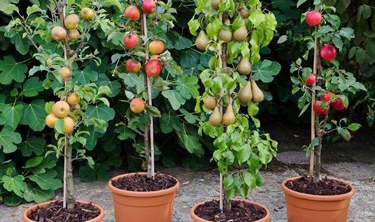
Pears and apples in pots
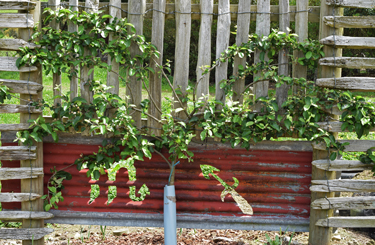
espalier apple tree
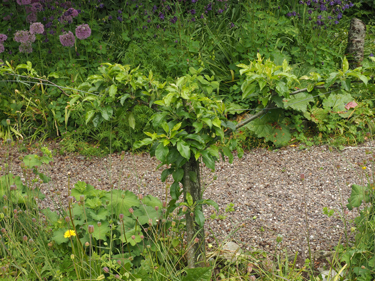
Apple trained as a 'step-over' espalier
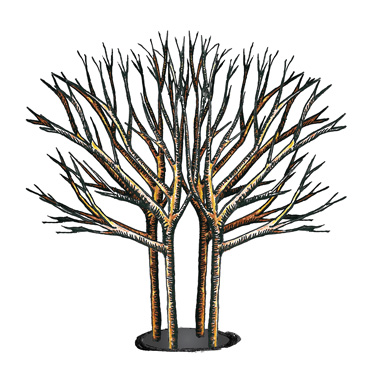
Four trees in one planting hole.
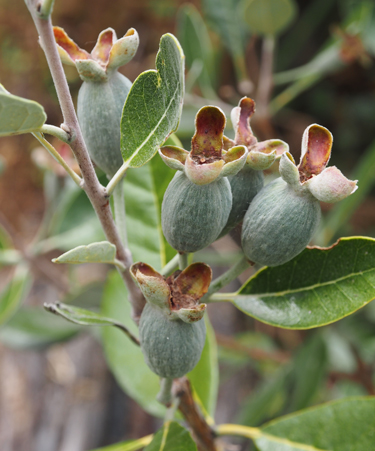
Young feijoa fruit
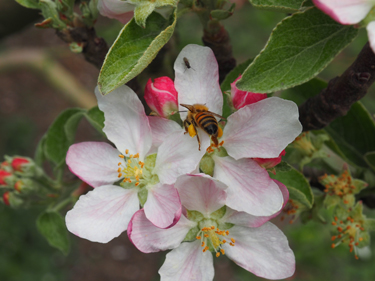
Spring apple blossom attracts honey bees

